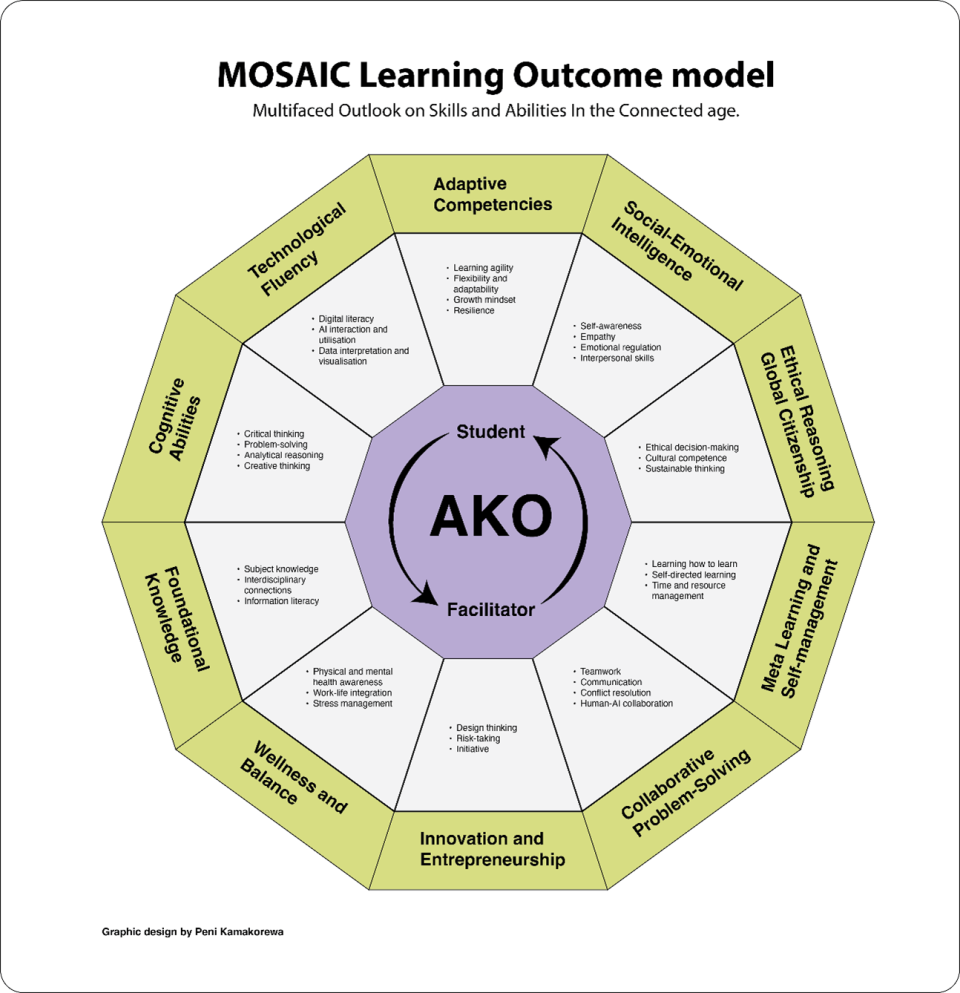
A new way of designing learning outcomes in line with future skills
You may also like
Popular resources
As a learning designer, when I have conversations with university teaching staff about their courses, they always ask me “How do I redesign my assessments or redesign my course?” My first response, “What are your learning outcomes?”, often draws a blank stare. Traditionally, learning outcomes have been crafted based on specific knowledge students are expected to acquire. They provide clear expectations of what students are expected to know, understand and be able to do by the end of a course or programme.
However, the workplace is being dramatically reshaped by innovation and technological developments. This creates a sense of uncertainty about what roles and competencies will be required in the workplace and challenges the static and standardised approach to crafting learning outcomes. Does this mean the traditional approach to crafting them is outdated?
As educators, we find ourselves crystal-ball gazing, tasked with equipping students not only with subject-matter expertise, but also with the future-proof skills needed to help them thrive in an ever-changing world. If educators fail to keep pace with real-world demands, they risk becoming disconnected from the needs of both students and the workforce.
Bloom’s and structure of the observed learning outcomes (SOLO) are two learning taxonomies used to categorise learning objectives and assess student understanding beyond mere knowledge acquisition.
Bloom’s taxonomy focuses on cognitive processes in a hierarchical structure and provides a blueprint for crafting learning outcomes that push students beyond mere recall and towards higher-order thinking skills. Using verbs relating to knowledge acquisition, critical thinking and others, we can assess students’ knowledge, skills, attitudes, behaviours and abilities. They include “list”, “recall”, “evaluate” and “analyse”, among others.
SOLO taxonomy focuses on the complexity and assessment of a student’s understanding across five levels of comprehension: prestructural, unistructural, multicultural, relational and extended.
I propose another model – multifaceted outlook on skills and abilities in the connected age (MOSAIC) – that can be used in conjunction with both Bloom’s and SOLO taxonomies to support educators in answering the question “What skills do I want students to take away from this course?” It aims to cultivate foundational and cognitive knowledge, adaptability, emotional intelligence and a growth mindset, balancing traditional academic skills with human skills such as ethical reasoning to prepare students for an evolving world in which artificial intelligence (AI) is playing an ever-increasing role.
- Resource collection: Back to the basics of pedagogy
- Resource collection: What innovation needs to thrive in higher education
- Using fun and interactive micromodules to energise learning
MOSAIC learning outcomes model
“Ako” in Te ao Māori, one of New Zealand’s official languages, means both to teach and learn. It reflects the relationship between the student and the facilitator (teacher), acknowledging that each learns from the other and co-creates new knowledge. Student-centred Ako takes centre stage in this model, with the facilitator (teacher) interacting and guiding the student’s learning journey. The 10 green sections surrounding the centre stage are interconnected and reflect the diverse nature of the skills that educators should consider when crafting learning outcomes.

To remain current, we should reconsider and update learning outcomes at the start of each semester. This requires the educator to remain adaptable, flexible and up to date with workplace trends and ensure they are relevant. Using the MOSAIC learning outcomes model, educators can first decide on what skills they want students to acquire from the course, then – using Bloom’s taxonomy – use an appropriate verb to craft the learning outcome. The following questions can guide the process:
- What is a student going to learn from my course that they can’t learn online?
- What is the point of difference in my course?
- What skills is the student going to acquire and what’s in it for them?
- Why should they learn from me?
Let’s see how this works in practice by using a fictional course in year two:
Course Title: Narratives in Colour – the art of storytelling through visual media.
Course Description: In Narratives in Colour, students will explore the intricate relationship between visual art and storytelling across various media, including painting, graphic novels, digital art and film. This course examines how artists have used colour, composition and form to convey complex narratives and evoke emotional responses.
The educator will use the MOSAIC learning model to brainstorm the skills they want students to obtain and may decide on the following three: interpersonal skills from the social-emotional intelligence section; creative thinking from the cognitive abilities section; and design thinking from the innovation and entrepreneurship section.
Because the course is delivered in year two, the educator may decide to use measurable verbs from Bloom’s hierarchical structure that relate to “applying” and “analysing”. The learning outcomes may look like this.
Interpersonal skills: students will apply effective communication strategies in groups to collaboratively discuss and refine each other’s visual narratives.
Creative thinking: students will apply innovative techniques to develop unique visual narratives that challenge traditional storytelling methods.
Design thinking: students will analyse user experiences and audience engagement in visual storytelling, applying design thinking principles to create compelling and accessible narratives that resonate with diverse viewers.
Employers are increasingly seeking graduates who can think critically, collaborate across disciplines and apply knowledge in flexible, creative ways.
Most of the pressing complex problems we face today, such as climate change and global health, do not align neatly with the boundaries of individual academic disciplines, forcing us to adopt a transdisciplinary approach to education. The MOSAIC learning outcome model allows us to use a transdisciplinary lens when crafting our learning outcomes, fostering the development of transferable competencies that transcend any single subject area.
The time has come for a shift in our mindsets to reimagine, reinvent and prepare for the future.
Kay Harrison is a learning designer at the University of Auckland, New Zealand.
If you would like advice and insight from academics and university staff delivered direct to your inbox each week, sign up for the Campus newsletter.




